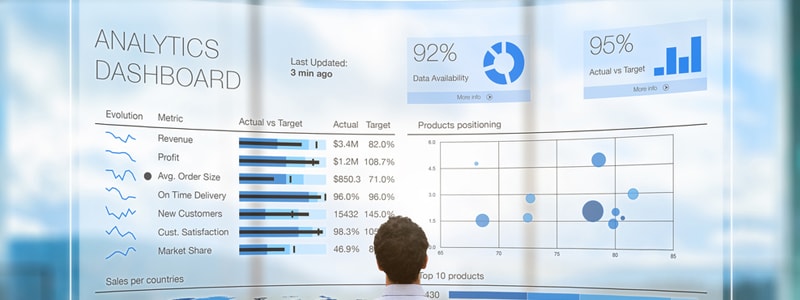What You Should and Shouldn’t Do with Dashboards
A dashboard isn’t just a home page for an app or tool. It acts like the console that you can use to control the tool or app.
However, to build an informative and actionable dashboard, you must keep certain pointers in mind.
Here are 5 sets of DOs and DON’Ts to create the most effective and efficient dashboard:
DO:
Do experiment, iterate, and get feedback. You will never be able to create the perfect dashboard in your first attempt. Therefore, experiment with various streams and tabs, use them and then get feedback.
DON’T:
Don’t overdesign. Anything overdone loses its application. Therefore, don’t simply add every stream and tab you can. Analyze what works best for you.
DO:
Do consider the audience and make it personal. Your dashboard is only visible to your team. Therefore, insert only those streams and tabs that matter.
DON’T:
Don’t try to answer every question at once. Your data solves many purposes, but not all of them must be solved at once. Do not overcrowd your dashboard or over-analyze your data.
DO:
Do use BANs (Big-Ass Numbers). Your data figures must be used to maximum capacity. Make sure all key metrics are quantified and taken into consideration.
DON’T:
Don’t use the same old chart for your data. Get creative with your data insights and reports and make data analysis a fun task.
DO:
Do design with mobile devices in mind. Most analysts now use mobile phones to visit and work on the dashboards. Therefore, design your dashboard keeping this point of contact in mind.
DON’T:
Don’t forget to consider dashboard real estate. Don’t simply use every inch for your dashboard, as that makes it very complicated to read. Instead, organize and display only important insights.
DO:
Do take inspiration from dashboards across industries. Before you create your dashboard, do your due diligence and check out dashboard templates used across industries similar to yours.
DON’T:
Don’t assume your audience knows where to start. Create your dashboard in such a manner that even someone who may not know much about data analysis can understand the flow.
With these few tips in mind, you can create an efficient dashboard that works wonders for you and your team.
If you want to learn more about the best and worst ways to use dashboards, click the link below for more information.
